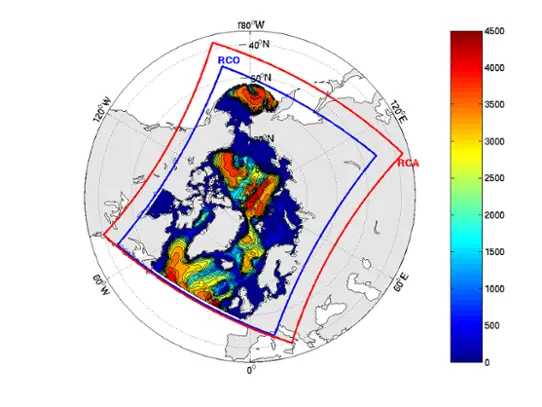RCO
RCO (Rossby Centre Ocean model) is an oceanographic circulation model.This means the model calculates how the water flows and such thingswhich influences currents such as temperature, salinity and icecover. RCO is mostly used for the Baltic Sea and the Arctic Sea.
RCO is well suited for simulations of long time periods which is necessary for investigating ocean climate. The limiting factor of the time period is the need of meteorological data, e.g., winds, of good enough quality to make a model simulation useful.
Usually RCO is used together with other models. It can be coupled with the meteorological model RCA (Rossby Centre Atmosphere model) and is then called RCAO. The purpose is to catch the interaction between sea, sea ice and atmosphere. Heat and moisture from the sea influences the air circulation which in turn affects the conditions in the sea. Coupled influences are important for simulations longer than a few days. The coupled model RCAO can with benefit be used for climate studies of possible future climates.
Coupled with SCOBI the model is called RCO-SCOBI. SCOBI is a model for nutrients and algae. By coupling the models one can, e.g., study transports of nutrients and changes in the sea environment on long time scales.
 Zoom image
Zoom imageFigure 1. The RCAO models calculation grid over Arctic. The red lines show the atmospheric model (RCA) area and the blue ones the oceanographic model (RCO) area. The coloured indicates the depth.
 Zoom image
Zoom imageFigure 2. Transport of phosphorus in the Baltic Sea as simulated with RCO-SCOBI. The transport direction is indicated with the arrows and the magnitude of the transport with colours.

